- Details
- Hits: 1953
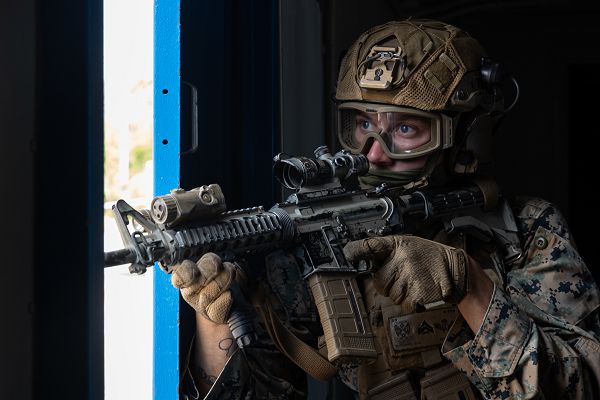
Camp Hansen, Okinawa, Japan. (January 10, 2024): The face of warfare is changing. Rather than the large land operations of World War II, today’s infantry troops find themselves fighting in urban environments where the rules are different. In this photo by Corporal Osmar Gutierrez, Marine Corporal Cole Kitchin, an antitank missile gunner with Battalion Landing Team 1/1, 31st Marine Expeditionary Unit, posts security while participating in urbanized terrain training at Camp Hansen, Okinawa.
Officially called Military Operations in Urban Terrain (MOUT), the course teaches Marines how to plan, organize, and launch successful combat operations in an urban environment. America has learned from bitter experience the challenges of close quarter combat in places like Fallujah, Iraq and is determined to overcome them.
There are many complicating factors in urban warfare, including the presence of civilians and the difficulty of urban terrain. Also, combat in a city negates many advantages of modern armies in armor, heavy artillery, and air support. Ambushes by small groups of insurgents using handheld anti-tank weapons can cause havoc while the technically superior side is hesitant to use artillery or air power for fear of killing civilians. Worse, experience has shown some fanatics deliberately mix with the population using innocent civilians as human shields.
Even worse, it is often difficult to distinguish between civilians and armed militias or local gangs. The enemy often has detailed knowledge of buildings, alleyways, and escape routes and may enjoy the active support of the locals. Destroyed buildings provide excellent posts for snipers and the rubble-filled streets provide multiple places for booby traps.
Finally, commanders must worry about the underground threat posed by tunnels and sewers where insurgents can move undetected about the city, springing ambushes and then disappearing.
- Details
- Hits: 923
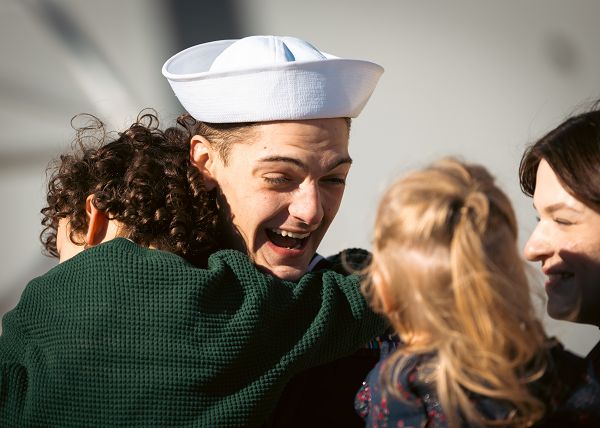
Naval Air Station Mayport, Florida. (January 4, 2024): A joyful reunion! In this photo by MC1 Brandon J. Vinson, a Sailor assigned to the Arleigh-Burke class guided-missile destroyer USS Thomas Hudner hugs his family after arriving at Naval Station Mayport after an eight-month deployment. The Hudner deployed as a part of the Gerald R. Ford Carrier Strike Group to the Red Sea to protect freedom of navigation in this vital waterway. During the deployment, the Hudner, a guided missile destroyer, shot down multiple one-way attack drones launched from Houthi-controlled areas in Yemen. According to Central Command, the warship shot the drones while on patrol in the Bab Al-Mandeb Strait, a major waterway vital to the world economy. There was no damage to the ship or injuries to her crew.
- Details
- Hits: 3764
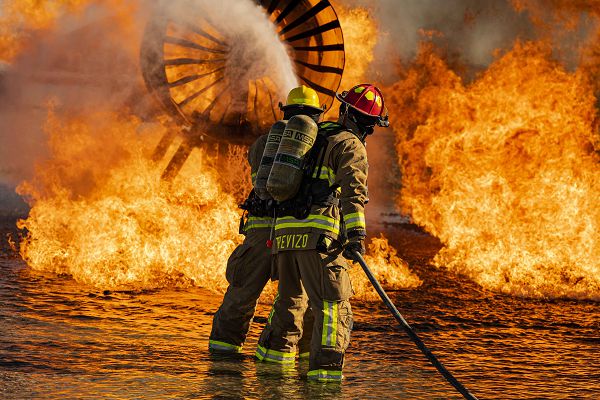
Nellis Air Force Base, Nevada. (January 12, 2024): Unlike their civilian counterparts, Air Force Fire Protection Specials face hazards that are unique to flight operations. In this photo by Senior Airman Zachary Rufus, Airman 1st Class Kyle Datu and Staff Sergeant Matt Trevizo with the 99th Civil Engineering Squadron extinguish a fire during an aircraft live fire training exercise. The training employed propane ignitors built into multiple positions throughout and around the training fuselage to give firefighters a realistic training environment.
Air Force Firefighters must deal with everything from grass fires to exploding rocket fuel and be ready to respond to aircraft emergencies around the clock. They are also responsible for specialized rescues, hazardous material responses, and even weapons of mass destruction. Air Force Firefighters are required to complete these training sessions twice a year under both day and night conditions to maintain their certification.
- Details
- Hits: 809
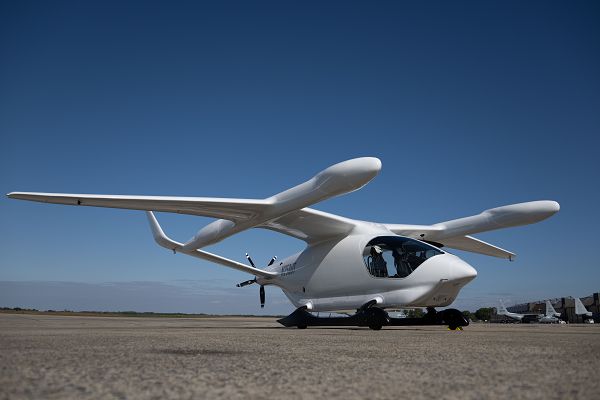
Joint Base Andrews, Maryland. (January 10, 2024): The age of electric flying machines has arrived. In this photo by Airman 1st Class Gianluca Ciccopiedi, an ALIA electric conventional takeoff and landing aircraft sits on the flight line after final test flights at Duke Field, Eglin Air Force Base. The ALIA test flights were supervised by the 413th Flight Test Squadron, the Air Force’s rotary wing squadron responsible for evaluating its new aircraft.
A product of BETA Technologies, the ALIA has both conventional and vertical takeoff configurations and is the Air Force’s first zero-emissions aircraft. The craft is expected to revolutionize tactical air travel with its near silent engines that eliminate the need for fossil fuels.
- Details
- Hits: 1013

Chabelley Village, Djibouti. (January 9, 2024): There is no greater joy than seeing young children (and the not so young) dancing with such obvious delight. In this photo by Staff Sergeant Allison Payne, Air Force Captain Elise Hart shows off her dance moves with local kids during a community engagement in this tiny African village. Air Force servicemembers visited the village to deliver books and personal hygiene items and to develop closer bonds with their hosts.
Djibouti is located on the Horn of Africa on the Red Sea and is bordered by Somalia to the south, Ethiopia to the southwest, and Eritrea in the north. A country of just under 9,000 square miles, Djibouti is a mostly French and Arabic speaking country of over 920,000 that are 90 percent Muslim.
Its strategic location near the Gulf of Aden and world's busiest shipping lanes makes Djibouti extremely important to world commerce. It serves as a key port for American warships to refuel and provision while patrolling the Bab Al-Mandeb Strait, a narrow waterway that controls access to the Red Sea and Indian Ocean.
- Details
- Hits: 960
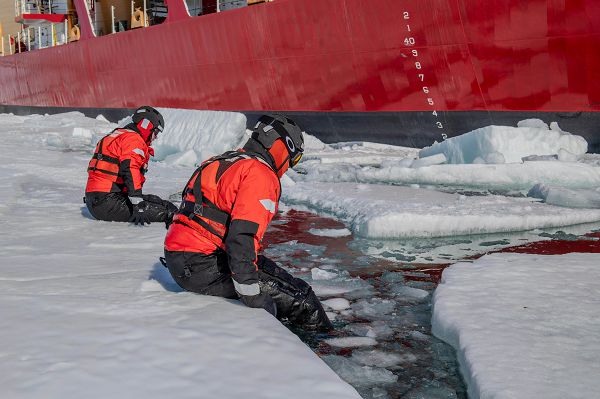
McMurdo Sound, Antarctica. (January 12, 2024): When we think of the Coast Guard, we often imagine fast boats chasing drug dealers and performing daring rescues at sea. What many may not realize is that ice rescues are one of the Coast Guard’s major missions. In this photo by Petty Officer 3rd Class Ryan Graves, Petty Officer 1st Class Joshua Tangermann and Petty Officer 2nd Class Harrison Bauer lower themselves into the water while practicing ice rescue techniques in frozen Antarctica. The USCG holds these training sessions each year during Operation Deep Freeze, an icebreaking and resupply mission to the South Pole. (More on this in our next newsletter).
In these rescues, Guardsman are fighting the “1-10-1” rule; once in the water a victim has one minute to control their breathing, 10 minutes before they are unable to rescue themselves, and one hour before they will succumb to hypothermia. Hypothermia is when your body loses heat faster than it can produce it. Symptoms of hypothermia begin with shivering, slurred speech, and slow, shallow breathing. Later stages include clumsiness, drowsiness, confusion, and loss of consciousness.


